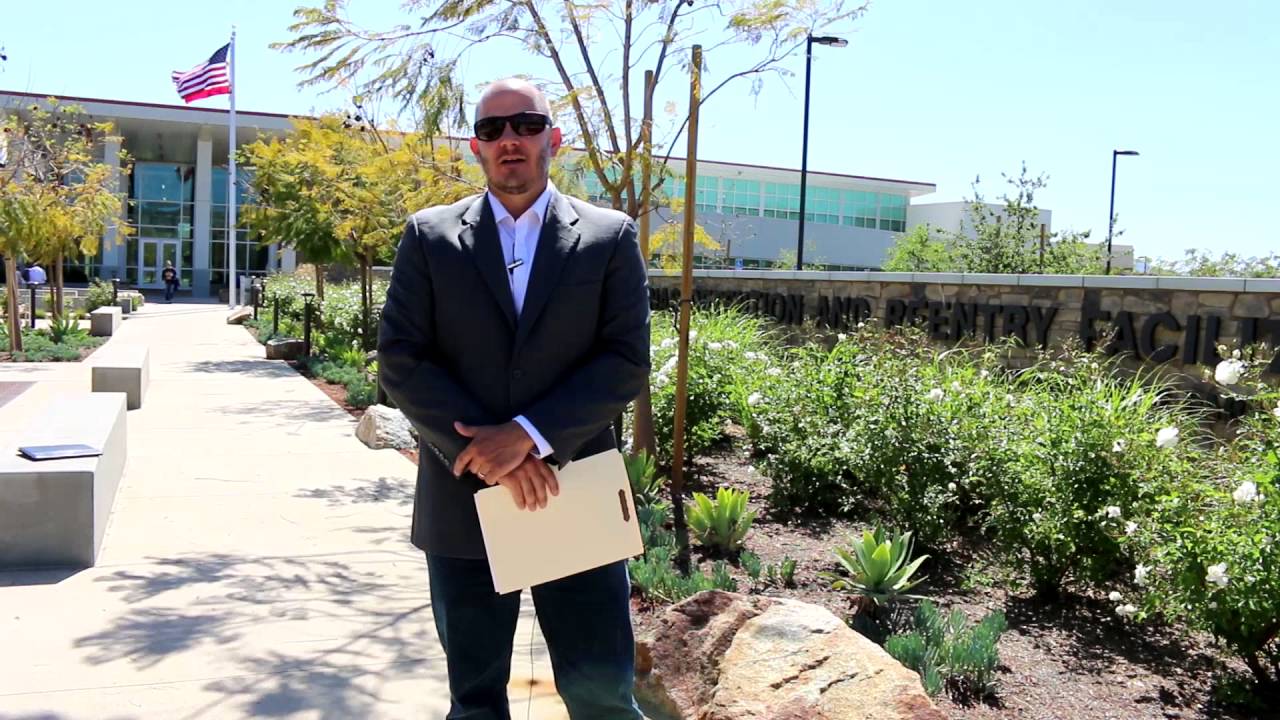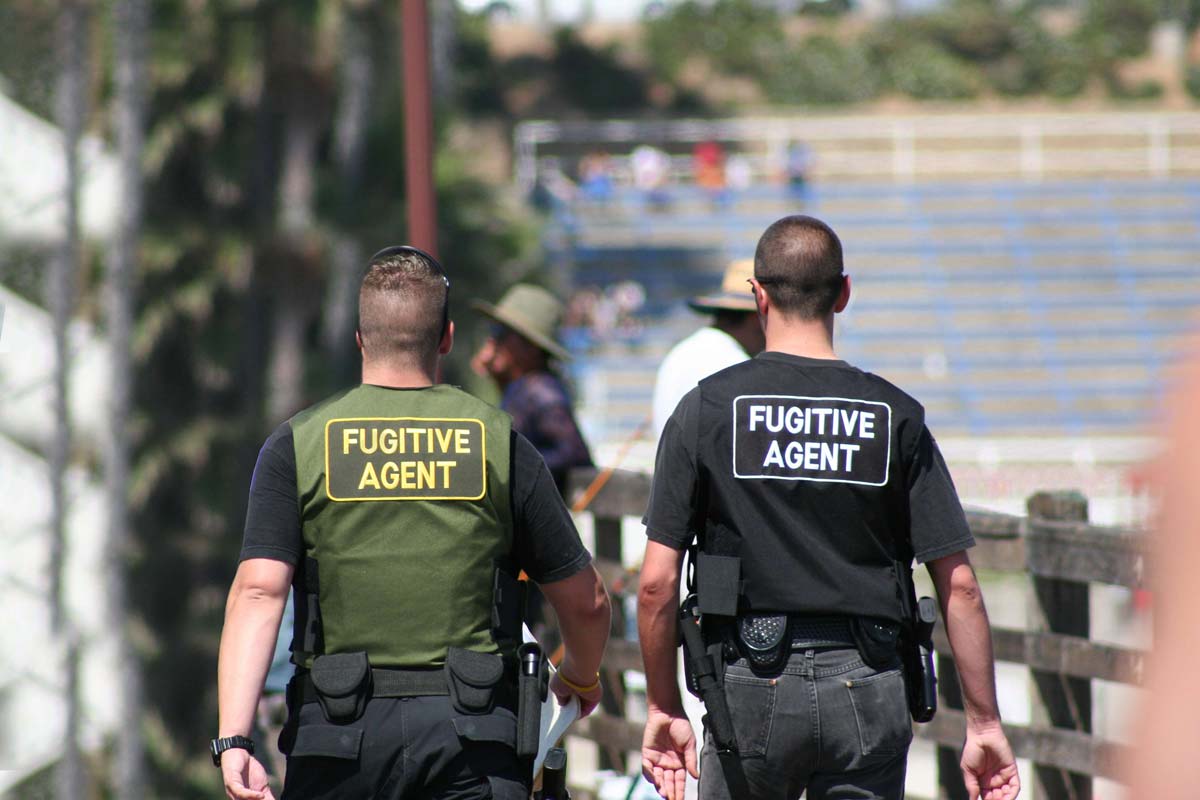

Finance
How Do Bail Bonds Work In Texas
Modified: February 21, 2024
Discover how bail bonds work in Texas and gain valuable insights into the finance aspect of the process. Find out everything you need to know to navigate through the bail system efficiently.
(Many of the links in this article redirect to a specific reviewed product. Your purchase of these products through affiliate links helps to generate commission for LiveWell, at no extra cost. Learn more)
Table of Contents
Introduction
Welcome to the world of bail bonds in Texas, where the legal system provides individuals with the opportunity to secure their release from jail while awaiting trial. When someone is arrested, the court may set a monetary amount that must be paid as a guarantee of their appearance at future court hearings. This financial guarantee is known as bail, and it acts as a form of insurance to ensure that the accused will show up for their court dates.
However, the amount set for bail is often exorbitant and beyond the means of many people. This is where bail bonds come into play. A bail bond is a financial arrangement between the defendant, a licensed bail bondsman, and an insurance company. By working with a bail bondsman, defendants can secure their release from jail by paying only a fraction of the total bail amount upfront.
In Texas, the process of obtaining a bail bond and navigating through the legal system can be complex. It is important to understand how bail bonds work, the different types of bail bonds available, and the responsibilities of both the defendant and the bail bondsman. By gaining insight into these intricacies, individuals can make informed decisions and effectively exercise their rights within the Texas legal framework.
In this article, we will provide a comprehensive overview of how bail bonds work in Texas, covering the bail bond process, the types of bail bonds available, eligibility requirements, and the responsibilities of both the defendant and the bail bondsman. We will also discuss the potential risks and consequences associated with bail bonds, ensuring individuals are fully aware of the implications of their choices.
So, whether you find yourself in need of a bail bond or simply want to expand your knowledge of the Texas legal system, read on to discover all you need to know about bail bonds in the Lone Star State.
Understanding Bail Bonds
Bail bonds serve as a financial guarantee to ensure an individual’s appearance in court following an arrest. When someone is taken into custody, a bail amount is set by the court, which is the monetary value required for the defendant’s release. This amount can vary depending on various factors, including the severity of the alleged crime, the defendant’s criminal history, and the judge’s discretion.
However, not everyone can afford to pay the full bail amount upfront. This is where bail bondsmen come into play. A bail bondsman, also known as a bail agent, is a licensed professional who acts as the facilitator between the defendant and the court. They provide a guarantee to the court that the defendant will appear for their required court appearances, and in return, they charge a non-refundable fee known as the premium.
The premium for a bail bond is typically a percentage of the total bail amount, usually around 10%. For example, if the bail amount set by the court is $10,000, the premium for a bail bond would be $1,000. This fee is considered the cost of the bail bondsman’s services and is non-refundable, regardless of the outcome of the case.
By working with a bail bondsman, defendants can secure their release from jail by paying only a fraction of the total bail amount. The bail bondsman takes on the responsibility of paying the full bail amount to the court if the defendant fails to appear for their scheduled court dates. This provides an incentive for the defendant to fulfill their obligations and ensures that the court’s interests are protected.
It’s important to note that obtaining a bail bond is not always an option. In certain situations, such as when the defendant is considered a flight risk or poses a threat to the community, the court may deny bail or set it at an unaffordable amount. Factors such as the severity of the alleged crime, previous criminal history, ties to the community, and risk of obstruction of justice are taken into consideration when determining eligibility for a bail bond.
Understanding the basics of bail bonds is crucial, as it allows individuals to navigate the legal system more effectively and make informed decisions. By utilizing the services of a bail bondsman, defendants can secure their release from jail and focus on preparing their defense for the upcoming court proceedings.
The Bail Bond Process in Texas
When someone is arrested in Texas, the bail bond process is set into motion. Understanding how this process works can help defendants and their loved ones navigate through the legal system with clarity and ease.
The first step in the bail bond process is the initial arrest. Once a person is taken into custody, they are typically brought to a local law enforcement agency for booking. During this process, their personal information is recorded, fingerprints are taken, and a mugshot is captured.
After the booking process, the defendant is brought before a judge who will determine whether to grant bail and at what amount. This initial hearing, known as an arraignment, provides the defendant with an opportunity to enter a plea and for the judge to assess flight risk and public safety concerns.
If the judge grants bail, they will set a specific amount that must be paid for the defendant’s release. At this point, the defendant or their loved ones can choose to pay the full bail amount in cash to the court. However, as mentioned earlier, this can often be a significant financial burden.
Alternatively, they can opt to work with a licensed bail bondsman. By paying the bail bondsman a non-refundable premium, usually around 10% of the total bail amount, the defendant can secure their release. The bail bondsman will then provide a bail bond, a document that serves as a guarantee to the court that the defendant will appear for all required court dates.
Once the bail bond is obtained, the defendant is released from custody. However, it is important to note that while the defendant is released, they are still required to fulfill certain obligations to remain in compliance with the terms of their release.
These obligations typically include attending all scheduled court hearings, avoiding any further criminal activity, and adhering to any additional restrictions imposed by the court, such as travel restrictions or drug testing. Failure to meet these obligations can result in the revocation of the bail bond and the defendant being returned to custody.
It is crucial for defendants to understand their rights and the conditions of their release during this process. Working with a knowledgeable attorney and staying in regular communication with the bail bondsman can help ensure a smoother and more successful outcome.
By grasping the bail bond process in Texas, defendants and their loved ones can make informed decisions and effectively navigate through the legal system while awaiting trial. Understanding the steps involved can help alleviate some of the stress and uncertainty that often accompanies an arrest and can contribute to a more positive experience throughout the entire process.
Types of Bail Bonds in Texas
When it comes to securing a bail bond in Texas, there are different types available to accommodate varying circumstances and financial situations. Understanding these different types of bail bonds can help defendants and their loved ones choose the most appropriate option for their specific needs.
1. Cash Bail Bond: This is the most straightforward type of bail bond. It involves paying the full bail amount in cash directly to the court. Once the defendant fulfills all their court obligations, the cash bail is returned, regardless of the case outcome. However, due to the high cost, many people are unable to afford this type of bond.
2. Surety Bail Bond: The most common type of bail bond, a surety bond involves working with a licensed bail bondsman. The bondsman charges a non-refundable premium, usually around 10% of the total bail amount, to secure the release of the defendant. The bondsman acts as a guarantee to the court that the defendant will appear for all required court dates.
3. Personal Recognizance Bond: Also known as a PR bond or “OR” bond (own recognizance), this type of bond does not require any financial payment. Instead, the defendant is released based on their promise to appear in court. Personal recognizance bonds are typically granted to individuals with strong ties to the community, no significant prior criminal record, and a low flight risk.
4. Federal Bail Bond: In cases involving federal charges, such as those related to federal crimes or offenses that cross state lines, federal bail bonds are used. These bonds are specialized and subject to federal regulations and procedures.
It’s important to note that the availability of these different types of bail bonds may vary depending on the jurisdiction and the specific details of the case. Working closely with a bail bondsman who is knowledgeable about the local laws and regulations can help defendants determine the most suitable option for their situation.
When choosing a bail bond, defendants should consider their financial resources, the severity of the charges, and any other specific factors related to their case. It’s advisable to consult with an attorney to fully understand the implications of each type of bond and make an informed decision.
By having an understanding of the various types of bail bonds in Texas, defendants can take the necessary steps to secure their release from jail while awaiting trial. Whether it’s paying in cash, working with a bail bondsman, or being granted a personal recognizance bond, defendants can choose the option that best aligns with their circumstances and ensures compliance with the court’s requirements.
Eligibility for Bail Bonds in Texas
While bail bonds can provide a way for defendants to secure their release from jail, not everyone is eligible to obtain a bail bond in Texas. Eligibility requirements for bail bonds are established to ensure public safety and mitigate the risk of flight or other potential dangers associated with releasing someone from custody.
Several factors are considered when determining eligibility for bail bonds in Texas:
1. Severity of the Alleged Crime: The nature, seriousness, and potential threat posed by the alleged offense play a significant role in determining eligibility for a bail bond. In cases involving violent crimes, severe felonies, or certain drug-related offenses, the court may deny bail or set it at a substantially higher amount.
2. Criminal History: The defendant’s prior criminal record, particularly convictions for similar offenses, can influence their eligibility for a bail bond. Repeat offenders or individuals with a history of failing to appear in court may face additional scrutiny when seeking a bond.
3. Flight Risk: The court assesses the likelihood of the defendant fleeing and not appearing for future court hearings. Factors such as ties to the community, employment status, family responsibilities, and financial stability are taken into consideration.
4. Public Safety Concerns: If the court believes that releasing the defendant poses a risk to public safety, they may deny a bail bond or impose additional conditions, such as electronic monitoring or restricting contact with certain individuals.
5. Obstruction of Justice: If there is reason to believe that the defendant may attempt to tamper with evidence or intimidate witnesses, the court may deny bail or set it at a higher amount to safeguard the integrity of the legal process.
It’s essential to understand that eligibility for a bail bond is determined on a case-by-case basis. The court considers individual circumstances and weighs the various factors mentioned above. Every defendant is entitled to due process and the opportunity to present their case for bail.
Working with an experienced attorney is crucial in navigating the bail bond process and addressing any concerns related to eligibility. An attorney can advocate on behalf of the defendant, present mitigating factors to the court, and increase the chances of being granted a bail bond.
By understanding the factors that contribute to eligibility for bail bonds in Texas, defendants can be better prepared to navigate the legal system and make informed decisions. While not every individual may meet the criteria for a bail bond, understanding the considerations that come into play allows defendants to explore alternatives and strategize their defense effectively.
Responsibilities of the Defendant and the Bail Bondsman
When utilizing a bail bond to secure release from jail in Texas, both the defendant and the bail bondsman have specific responsibilities to ensure a smooth and successful process. Understanding these responsibilities is crucial for all parties involved.
Responsibilities of the Defendant:
1. Appear for Court Dates: The most critical responsibility of the defendant is to attend all scheduled court hearings. Failure to appear can result in the revocation of the bail bond and the defendant being returned to custody. It is the defendant’s duty to remain in contact with their attorney and stay informed of any court date changes.
2. Comply with Court Conditions: Defendants must comply with any conditions imposed by the court as part of their release. This may include abstaining from drug use, adhering to travel restrictions, avoiding contact with certain individuals, or submitting to periodic drug tests. Violating these conditions can have severe consequences and may result in the bail bond being revoked.
3. Maintain Communication with the Bail Bondsman: Defendants should maintain open lines of communication with their bail bondsman throughout the process. This includes providing updated contact information and promptly addressing any concerns or issues that may arise.
Responsibilities of the Bail Bondsman:
1. Secure the Defendant’s Release: The primary responsibility of the bail bondsman is to secure the release of the defendant by posting the bail bond. It is their duty to ensure that all necessary paperwork is completed accurately and submitted to the court in a timely manner.
2. Monitor the Defendant’s Compliance: Bail bondsmen have a vested interest in ensuring that defendants fulfill their obligations. They may periodically check in with defendants to verify their compliance with court conditions and remind them of upcoming court dates.
3. Assist with the Surrender Process: If a defendant fails to appear in court, bail bondsmen are responsible for initiating the surrender process. They work with law enforcement to locate and apprehend the defendant, ensuring they are returned to custody and mitigating any potential liability for the bail bond amount.
4. Provide Guidance and Support: Bail bondsmen often serve as a valuable resource for defendants and their families throughout the legal process. They can provide guidance on navigating the system, recommend reputable attorneys, and offer support during what can be a stressful and overwhelming time.
It is essential for both the defendant and the bail bondsman to fulfill their responsibilities to maintain a successful bail bond arrangement. By understanding and meeting these obligations, defendants can secure their release and focus on preparing their defense, while bail bondsmen can fulfill their role in the legal process and ensure they minimize their own potential risks.
Procedure After Posting Bail
Once bail has been posted and the defendant has been released from jail in Texas, there are certain procedures and guidelines that must be followed to ensure a smooth transition during the period leading up to their court hearings.
1. Stay in Contact with Your Attorney: After posting bail, it is crucial for defendants to maintain regular communication with their attorney. The attorney will provide guidance on how to navigate the legal process, prepare for court hearings, and address any concerns or questions that may arise.
2. Attend All Scheduled Court Dates: Defendants must strictly adhere to all court schedules and appear for all required court hearings. Failure to appear can result in the revocation of the bail bond, issuance of a bench warrant, and potential re-arrest.
3. Follow Court-imposed Conditions: The court may impose certain conditions upon the defendant’s release from jail. These conditions could include travel restrictions, prohibitions on contacting certain individuals, or enrollment in community programs. It is vital to strictly adhere to these conditions to avoid any violations and potential consequences.
4. Maintain Open Communication with the Bail Bondsman: Defendants should continue to maintain open lines of communication with their bail bondsman even after their release. This ensures that the bail bondsman can stay updated on the defendant’s compliance with court conditions and provide any necessary guidance or support.
5. Address Any Changes in Contact Information: If your contact information changes after posting bail, it is your responsibility to inform both your attorney and the bail bondsman. This ensures that you can be reached for any updates or court-related matters.
6. Prepare for Your Defense: While out on bail, defendants should work closely with their attorney to prepare a strong defense. This may involve gathering evidence, interviewing witnesses, and strategizing legal arguments. It is essential to take this time to diligently prepare for upcoming court proceedings.
7. Cooperate with Pre-Trial Services: In some cases, defendants may be required to participate in pre-trial services, which can include drug testing, counseling programs, or regular check-ins with a probation officer. It is vital to comply with any instructions and requirements set forth by pre-trial services to demonstrate cooperation and responsibility.
By following these procedures after posting bail, defendants can ensure that they fulfill their obligations and navigate the legal system successfully. By staying in communication with their attorney and bail bondsman, adhering to court-imposed conditions, attending all court dates, and actively participating in their defense, defendants can optimize their chances of a favorable outcome in their case.
Potential Risks and Consequences
While securing a bail bond can provide temporary freedom for defendants awaiting trial in Texas, it’s important to be aware of the potential risks and consequences involved in this process. Understanding these risks can help defendants make informed decisions and navigate the legal system effectively.
1. Financial Responsibility: When obtaining a bail bond, defendants are required to pay a non-refundable premium, usually around 10% of the total bail amount, to the bail bondsman. While this upfront cost may seem more manageable than paying the full bail amount, it is still a financial responsibility that must be considered.
2. Loss of Collateral: In certain cases, bail bondsmen may require collateral as additional assurance of the defendant’s appearance in court. This can include personal property or assets that will be forfeited if the defendant fails to fulfill their obligations or appears to be a flight risk.
3. Adhering to Court Conditions: Defendants released on bail are required to comply with certain conditions set by the court. Any violations of these conditions, such as failing drug tests, disregarding travel restrictions, or contacting prohibited individuals, can result in the revocation of the bail bond and the defendant being returned to jail.
4. Increased Scrutiny and Surveillance: When released on bail, defendants may be subject to increased scrutiny and surveillance by both pre-trial services and law enforcement. This includes check-ins, home visits, and monitoring to ensure compliance with court-imposed conditions. Failure to meet these requirements can have negative consequences.
5. Impact on Future Sentencing: It’s important to note that securing a bail bond does not guarantee a favorable outcome in the case. If the defendant is convicted, the bail bond and the subsequent release may not influence the sentencing decision. The court will consider the nature of the offense, the defendant’s criminal history, and other relevant factors when determining the appropriate punishment.
6. Increased Legal Obligations: Being out on bail does not exempt defendants from their legal obligations. They are still required to attend all court hearings, cooperate with their attorney, and actively participate in their defense. Failure to fulfill these obligations can lead to the forfeit of the bail bond and potentially worsen the outcome of the case.
7. Risks of Defaulting: If defendants fail to appear in court as required, the bail bond may be declared in default. This not only results in the forfeit of any collateral provided but can also lead to additional legal consequences, such as the issuance of a bench warrant and potential extradition efforts to bring the defendant back into custody.
It’s important for defendants to fully understand the risks and consequences associated with bail bonds in Texas. Working closely with their attorney and maintaining open communication with their bail bondsman can help mitigate these risks and navigate the legal process more effectively.
By adhering to court-imposed conditions, fulfilling their legal obligations, and taking their defense seriously, defendants can minimize potential risks and increase their chances of a favorable outcome in their case.
Conclusion
Understanding how bail bonds work in Texas is essential in navigating the legal system and ensuring the best possible outcome for defendants. The bail bond process provides a means for individuals to secure their release from jail while awaiting trial, alleviating some of the financial burden of paying the full bail amount. By working with a licensed bail bondsman, defendants can gain temporary freedom and focus on preparing their defense.
Throughout the bail bond process, both defendants and bail bondsmen have specific responsibilities. Defendants must appear for all court dates, comply with court-imposed conditions, and maintain open communication with their attorney and bail bondsman. Bail bondsmen, on the other hand, are responsible for securing the defendant’s release, monitoring their compliance, and providing guidance and support throughout the legal process.
It’s important to be aware of the potential risks and consequences involved in the bail bond process. From financial obligations to adhering to court conditions, defendants must understand the potential pitfalls and make informed decisions. By taking their responsibilities seriously and working closely with their attorney, defendants can increase their chances of a favorable outcome in their case.
In conclusion, bail bonds play a crucial role in the Texas legal system, providing defendants with the opportunity to secure their release and continue their lives while awaiting trial. By understanding the bail bond process, the types of bail bonds available, eligibility requirements, and the associated risks, defendants can navigate the system more effectively and make informed decisions. Working with experienced professionals, such as bail bondsmen and attorneys, can provide the necessary guidance and support to ensure the best possible outcome for defendants.
Ultimately, the goal of the bail bond process is to balance the interests of the accused individuals with the need to uphold the integrity of the legal system. It allows defendants to exercise their right to be considered innocent until proven guilty while ensuring that they fulfill their obligations to the court. By understanding the intricacies of bail bonds in Texas, individuals can approach the legal process with knowledge and confidence, working towards a fair resolution of their case.














